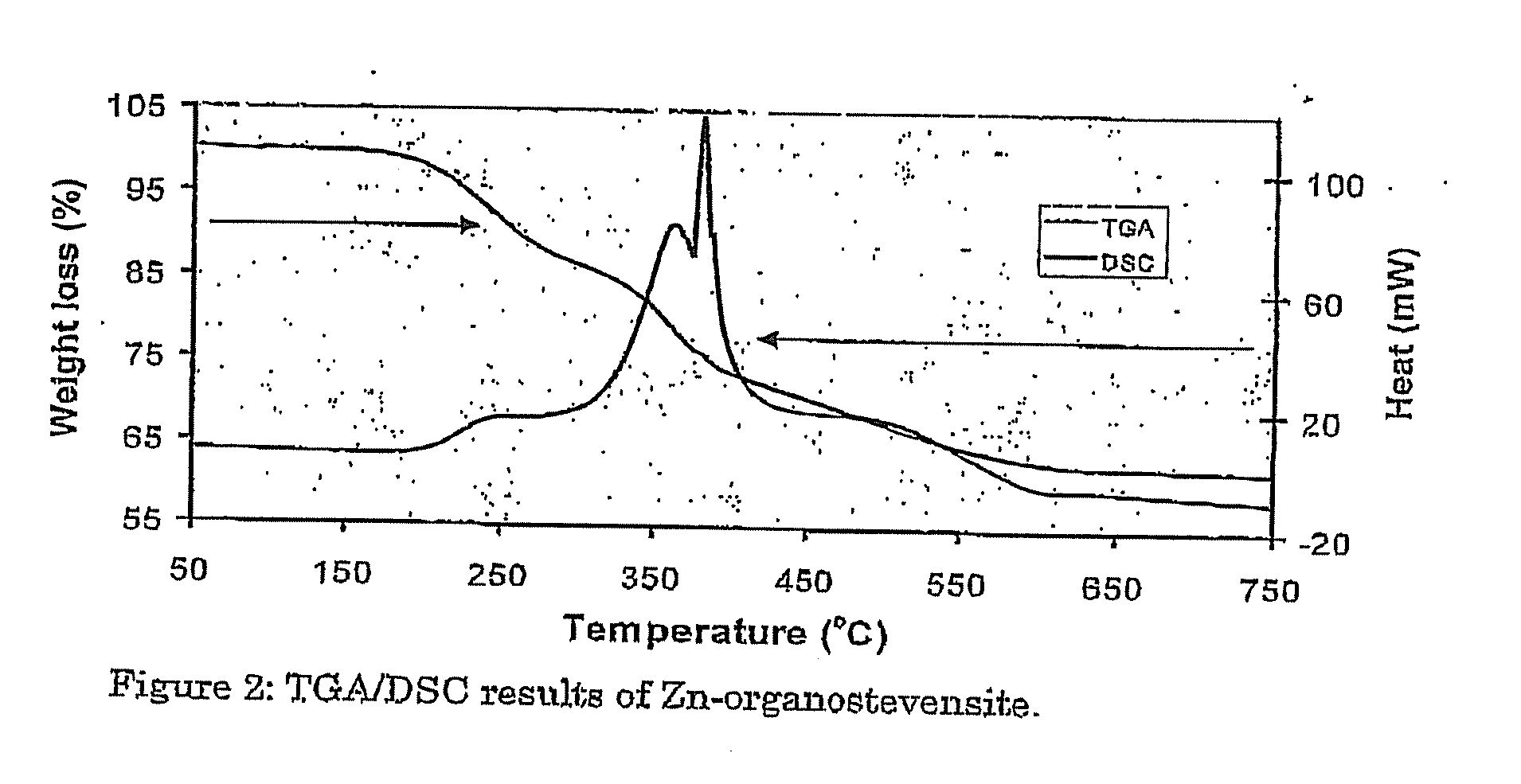Synthetic Organoclay Materials
a technology of organoclay and organic materials, applied in the field of synthetic organoclay materials, can solve the problems of deficiency of positive charge of platelets, very difficult control of properties, swelling of clay, etc., and achieve the effects of optimal charge and charge distribution, easy production, and easy dispersibility
- Summary
- Abstract
- Description
- Claims
- Application Information
AI Technical Summary
Benefits of technology
Problems solved by technology
Method used
Image
Examples
example
[0058] Water was added to 800 grams of water glass solution (27 wt. % SiO2) up to a volume of 2.5 litre. 300 grams of both Zn(NO3)2*6H2O and urea were added (Volume 3.3 litres) and the pH was adjusted with concentrated nitric acid to a value of around 1.5. The solution was added to a stirred stainless steel reactor, equipped with baffles and heated to 65-70° C. A hot solution of acidified dimethyloctadecylamine (ACROS, 87% 90 grams in 1 litre), 25 ml of concentrated nitric acid was used to obtain a more or less clear solution) was poured into the solution. The mixture was heated to 90° C. and stirred for 16-20 h at 500 rpm. After washing and drying a white fine powder was obtained, hydrophobic of nature. Yield 230-250 g.
[0059] Table 1 lists results calculated from the elemental analyses of two labscale products having different amounts of octadecylamine. Several conclusions can be drawn from these data: The Zn / Si ratio decreased due to the absence of Zn2+ in the interlayer for char...
PUM
| Property | Measurement | Unit |
|---|---|---|
| Fraction | aaaaa | aaaaa |
| Temperature | aaaaa | aaaaa |
| Time | aaaaa | aaaaa |
Abstract
Description
Claims
Application Information
 Login to View More
Login to View More - R&D
- Intellectual Property
- Life Sciences
- Materials
- Tech Scout
- Unparalleled Data Quality
- Higher Quality Content
- 60% Fewer Hallucinations
Browse by: Latest US Patents, China's latest patents, Technical Efficacy Thesaurus, Application Domain, Technology Topic, Popular Technical Reports.
© 2025 PatSnap. All rights reserved.Legal|Privacy policy|Modern Slavery Act Transparency Statement|Sitemap|About US| Contact US: help@patsnap.com


